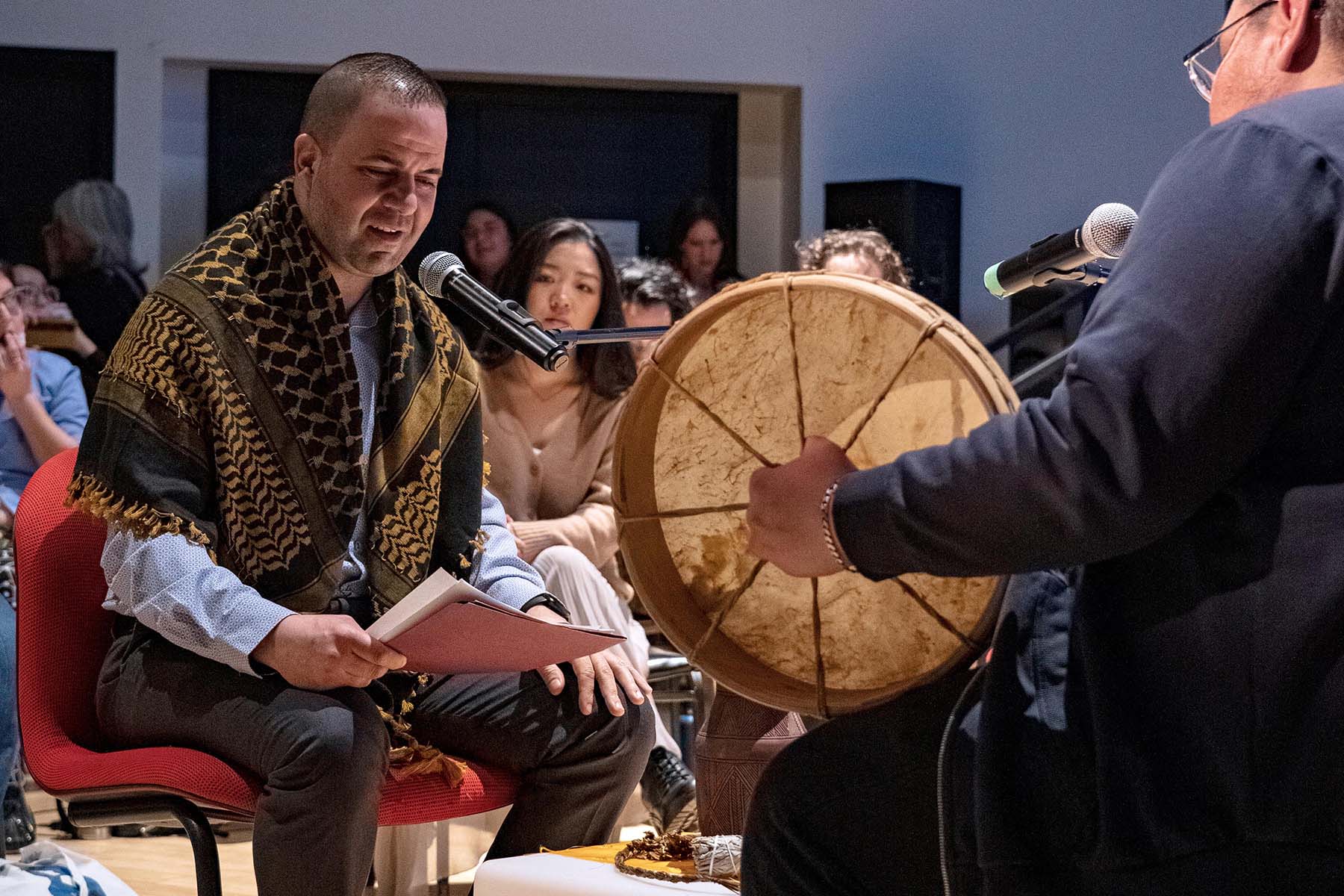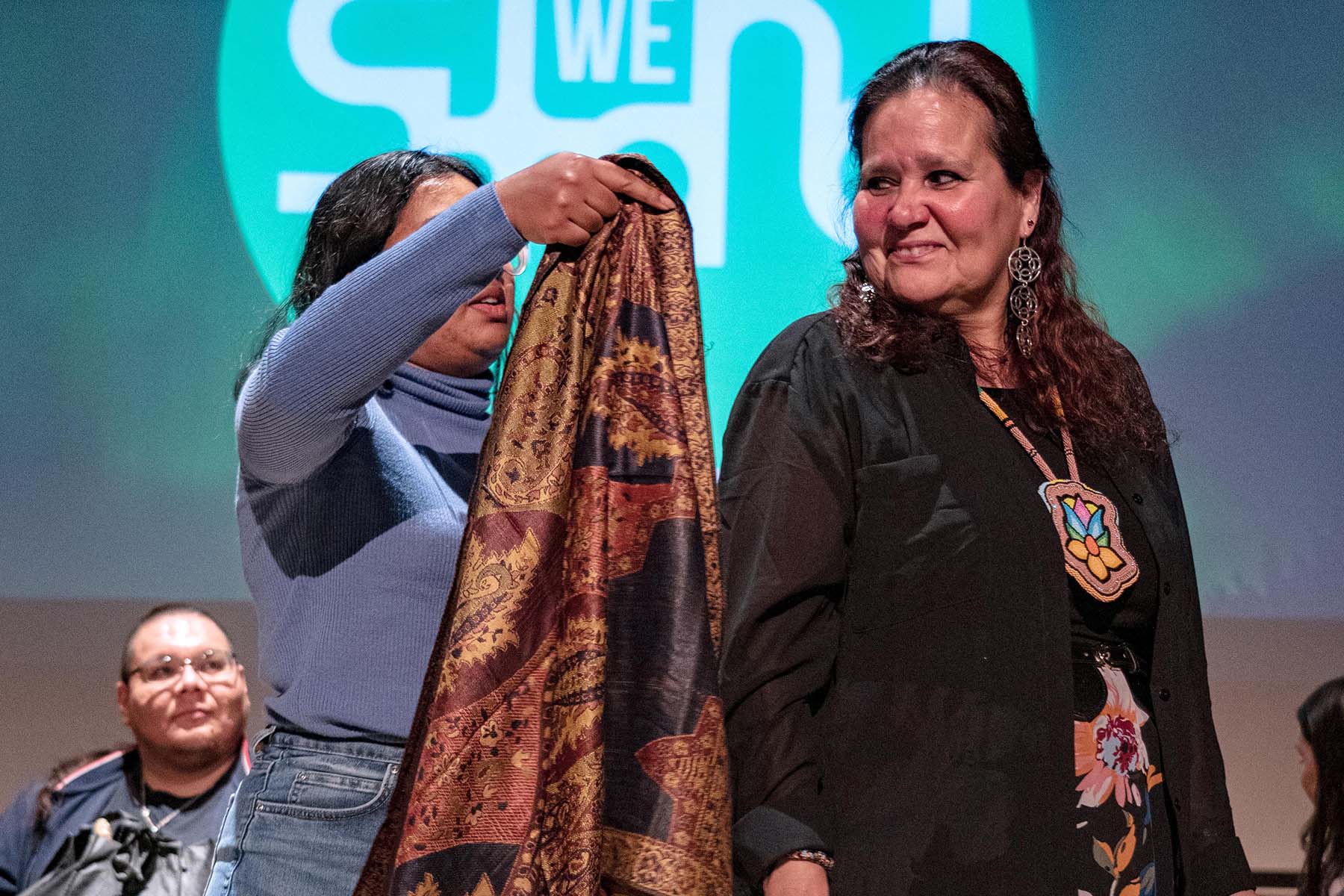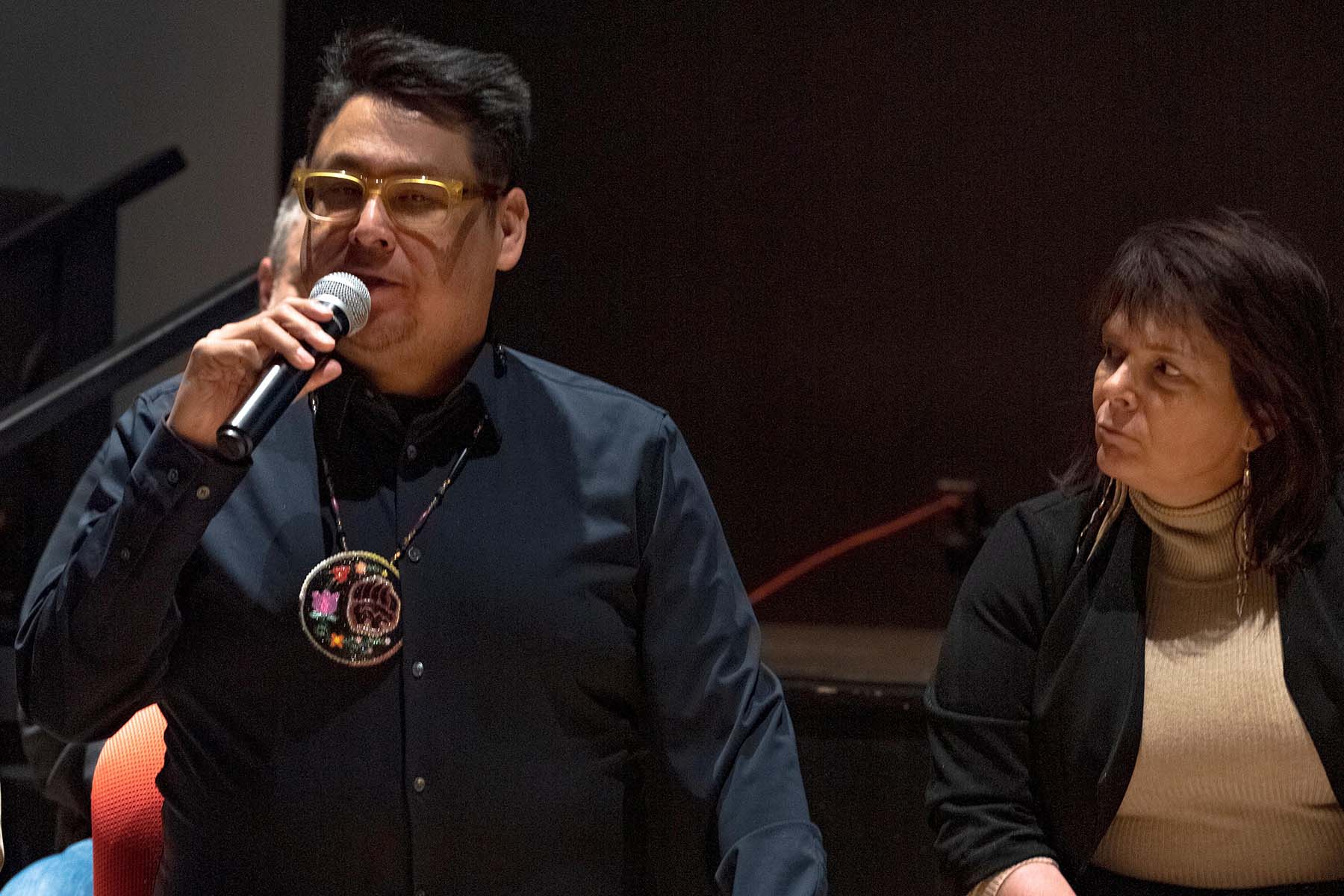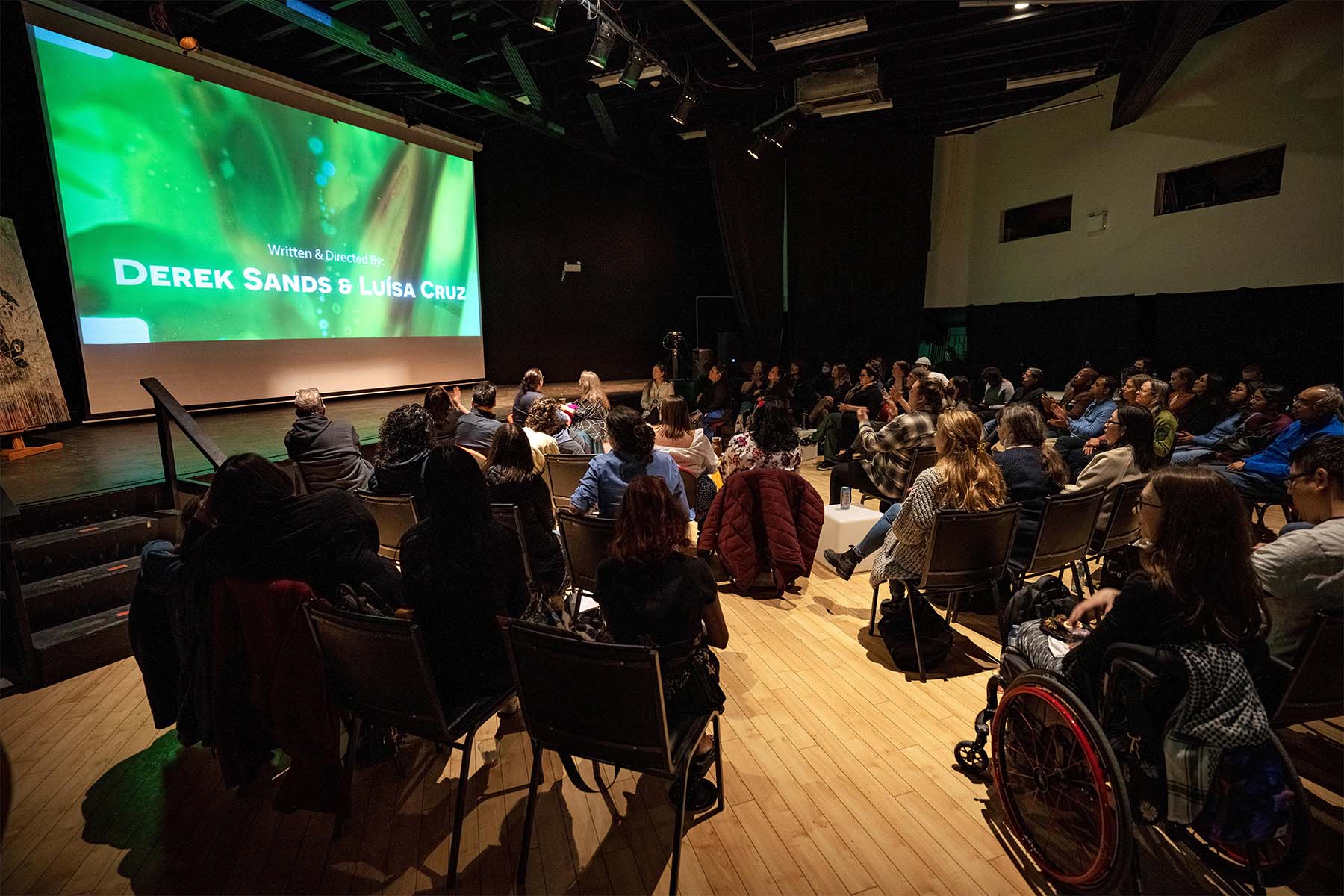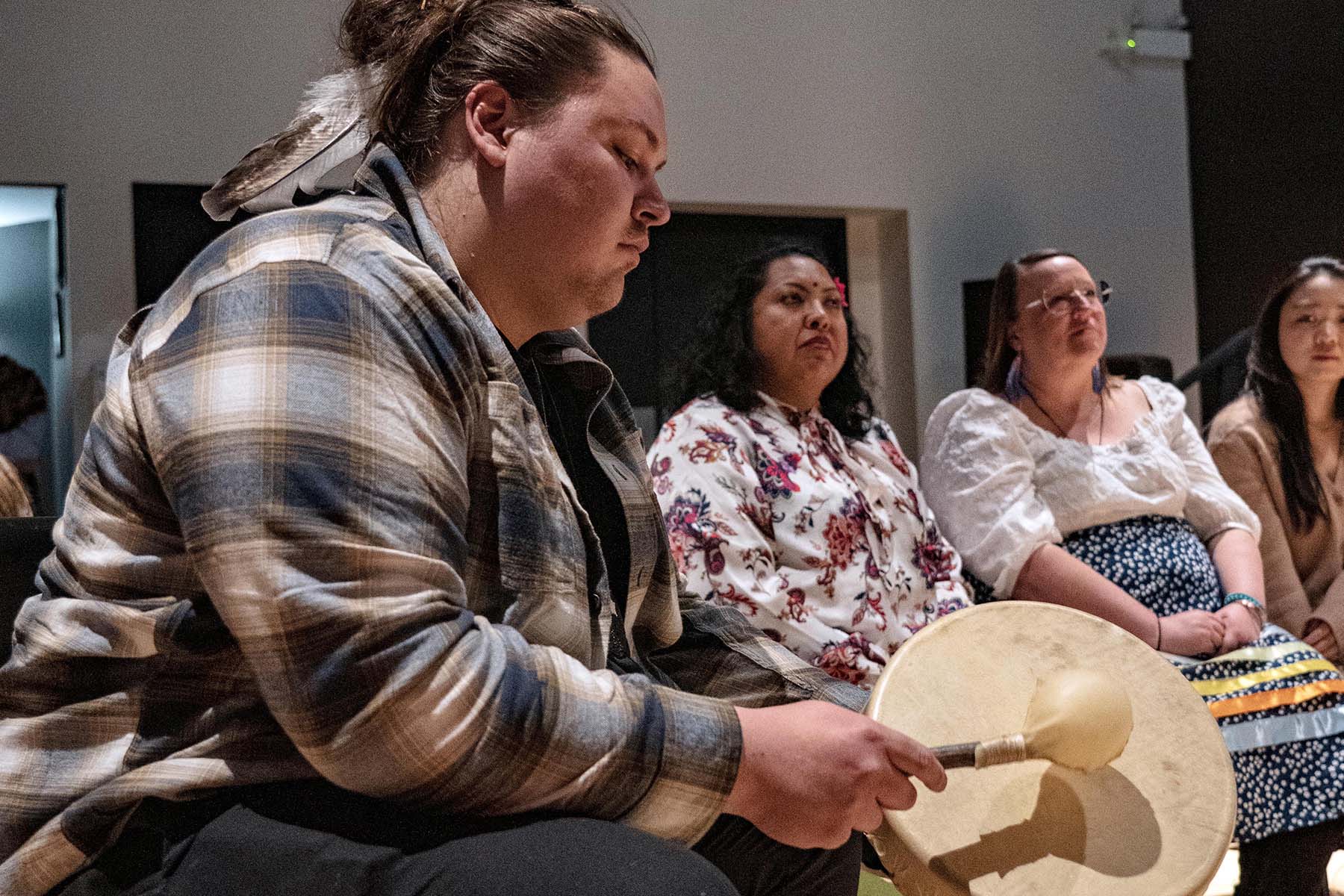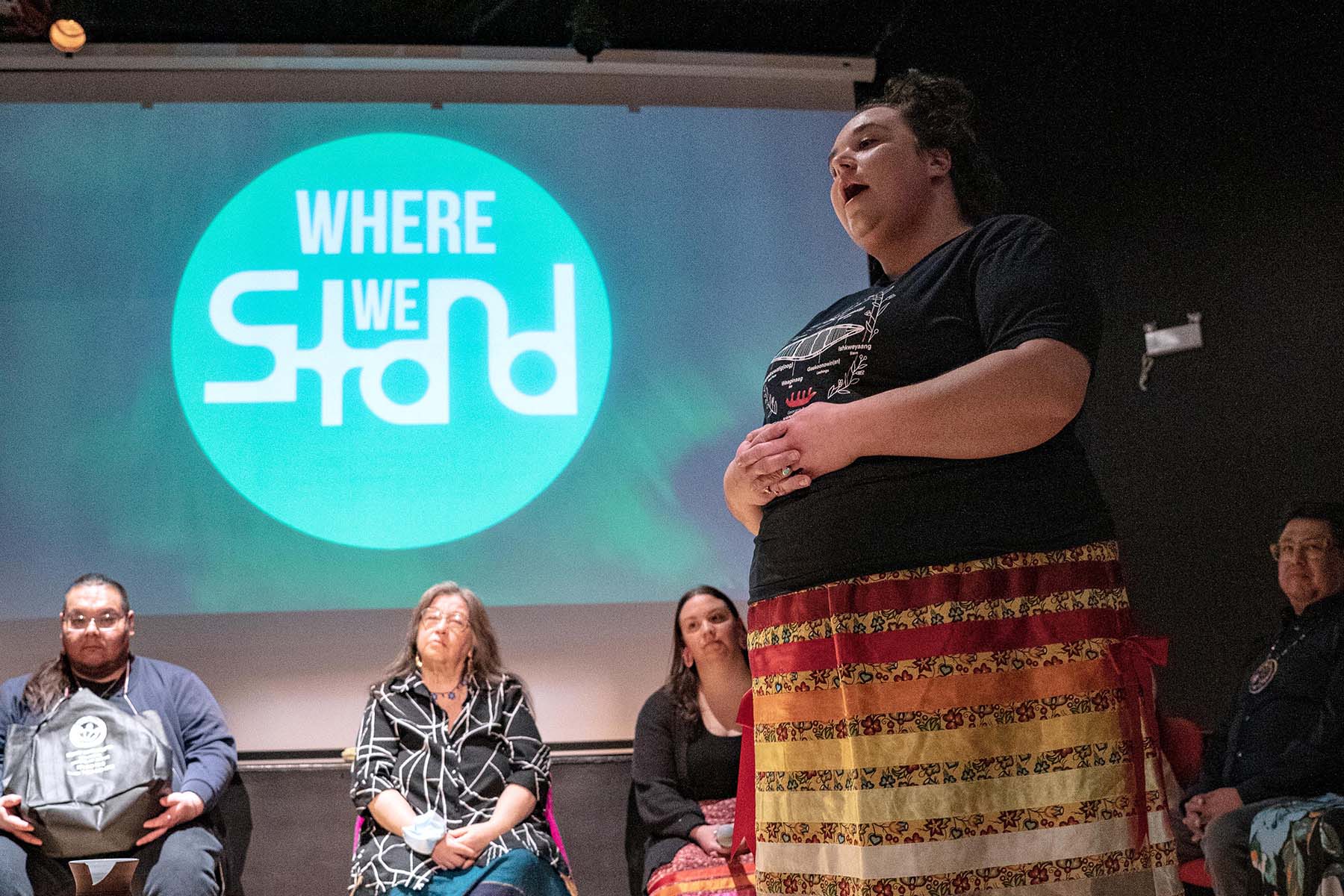Cultivating connection and understanding through the arts
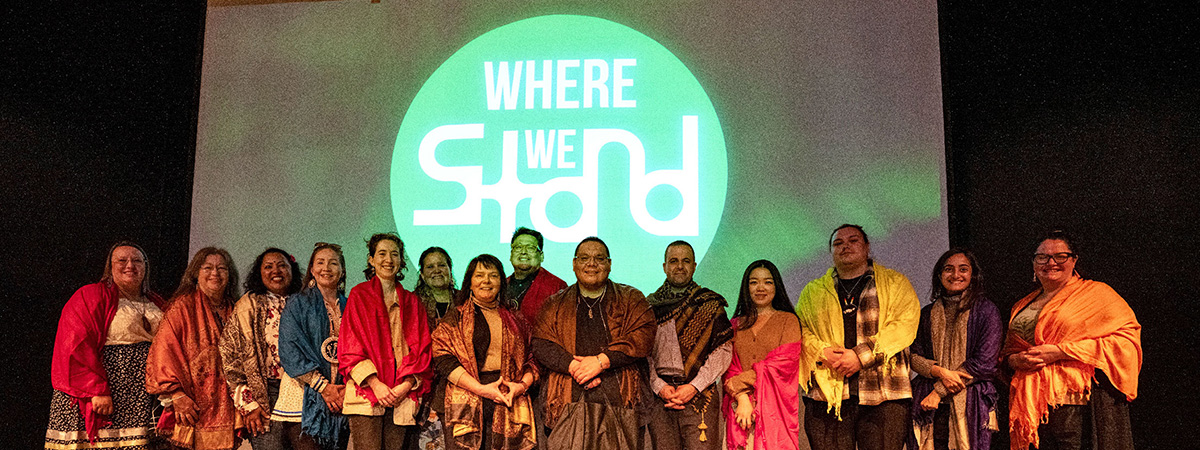
The WhereWeStand cohort at the Woodland Cultural Centre in Brantford, Ontario.
On Feb. 23 and 25, the Canada Excellence Research Chair in Migration and Integration multimedia storytelling project WhereWeStand premiered at the Canadian Museum of Immigration at Pier 21, Halifax, Nova Scotia, and the Woodland Cultural Centre, Brantford, Ontario. Through films, songs, spoken word and dance performances, a cohort of student artists shared powerful stories of identity, belonging, self-discovery and collaboration.
WhereWeStand, led by Cyrus Sundar Singh, Gemini Award-winning filmmaker and scholar, and Nicole Lee, Anishinaabe Kwe filmmaker, brought together 14 undergraduate and graduate students of Indigenous and newcomer backgrounds to work in pairs and co-create projects exploring their sense of belonging on Turtle Island, which we call Canada. The resulting creative work delved into themes such as the connection to home, the relationship to the land, the experience of truth and reconciliation for newcomers, resiliency through grief and the unseen struggles faced by minority groups in Canada.
The project fostered rare collaborations, bringing together individuals living in very different communities, sometimes even different time zones, to produce a shared narrative. For instance, Chinese Canadian Yanfei Lu, a dancer, and her project partner, William Monague of Beausoleil First Nation, a music producer, found common ground in their experiences to produce a film of music and dance called Unveiling, Embracing, Celebrating. They met for the first time in person in Nova Scotia only hours before the premiere.
Filmmaker Derek Sands, from Walpole Island First Nation, and his Brazilian partner, Luísa Cruz, found an unexpected friendship through their collaboration to produce Bkej, a film showing how plants can be translators and mediators of our sense of belonging to the land. “The best part of the project was meeting Derek’s family, creating those memories,” said Luísa.
The project also included lessons in the challenges of collaboration: Deyowidnron’t Teri Morrow, from Six Nations of the Grand River, chose to forge ahead with a solo project emphasizing resilience and self-discovery when her partner could no longer take part in the project.
The premieres concluded with the unveiling of a beautiful hand-stitched tapestry. This was a physical representation of the collaboration between participants Nidhi Menon, originally from the southern states of Tamil Nadu and Kerala, India, and Maya-Rose Simon, Metis and Anishinaabe from the Chippewa Tribe of Sault Ste. Marie. “Nidhi and I grew up worlds apart, and yet we had very similar childhoods,” said Maya-Rose. “We all live in this huge world, but we go through these human experiences that are very similar. Through these similarities, we can find our roots.”
Audiences at both the Halifax and Brantford premieres were invited to add to the tapestry with their own expressions of identity. “We began working on this tapestry and started this journey together,” said Nidhi, “but the journey does not end here.”
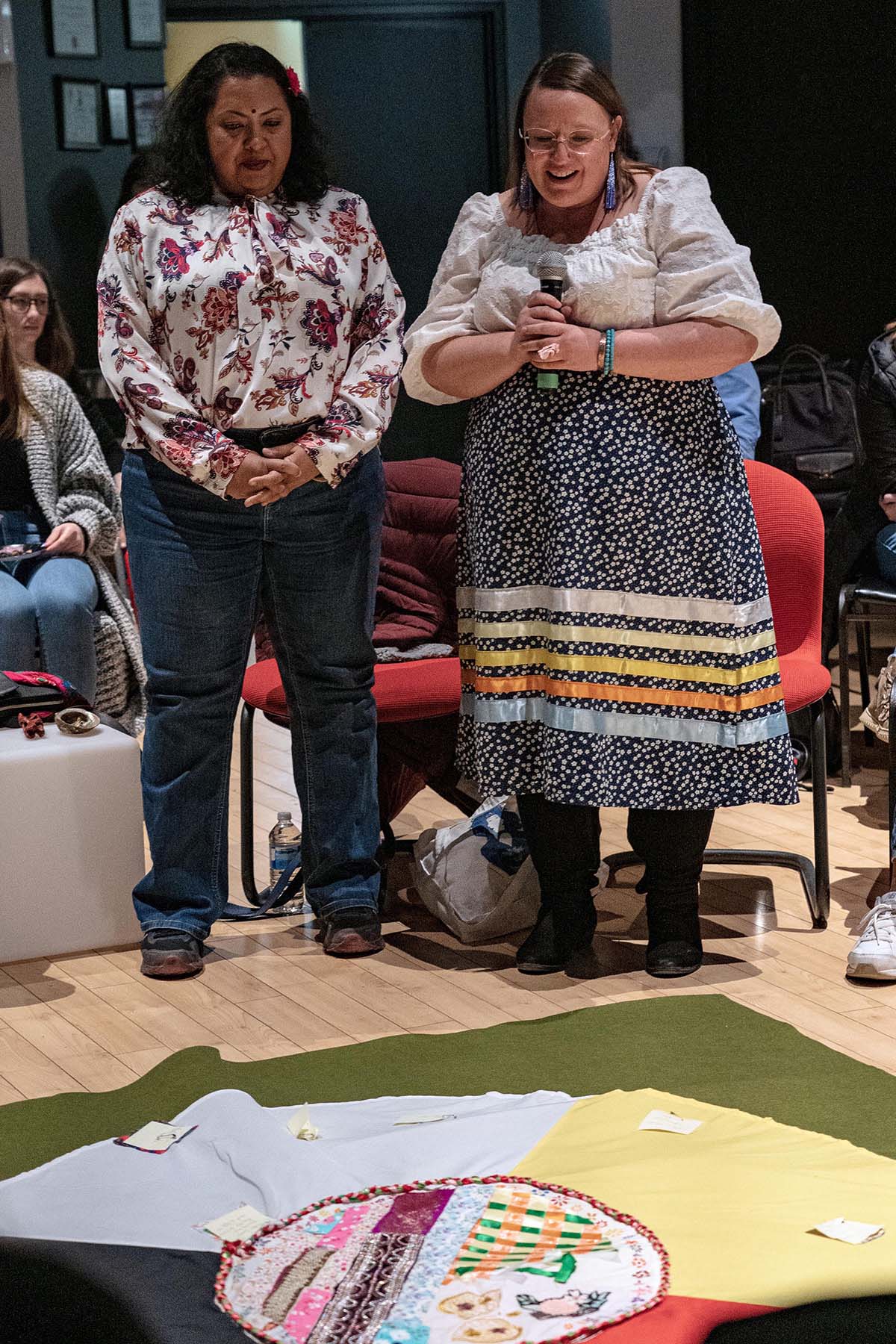
Nidhi Menon (left) and Maya-Rose Simon.
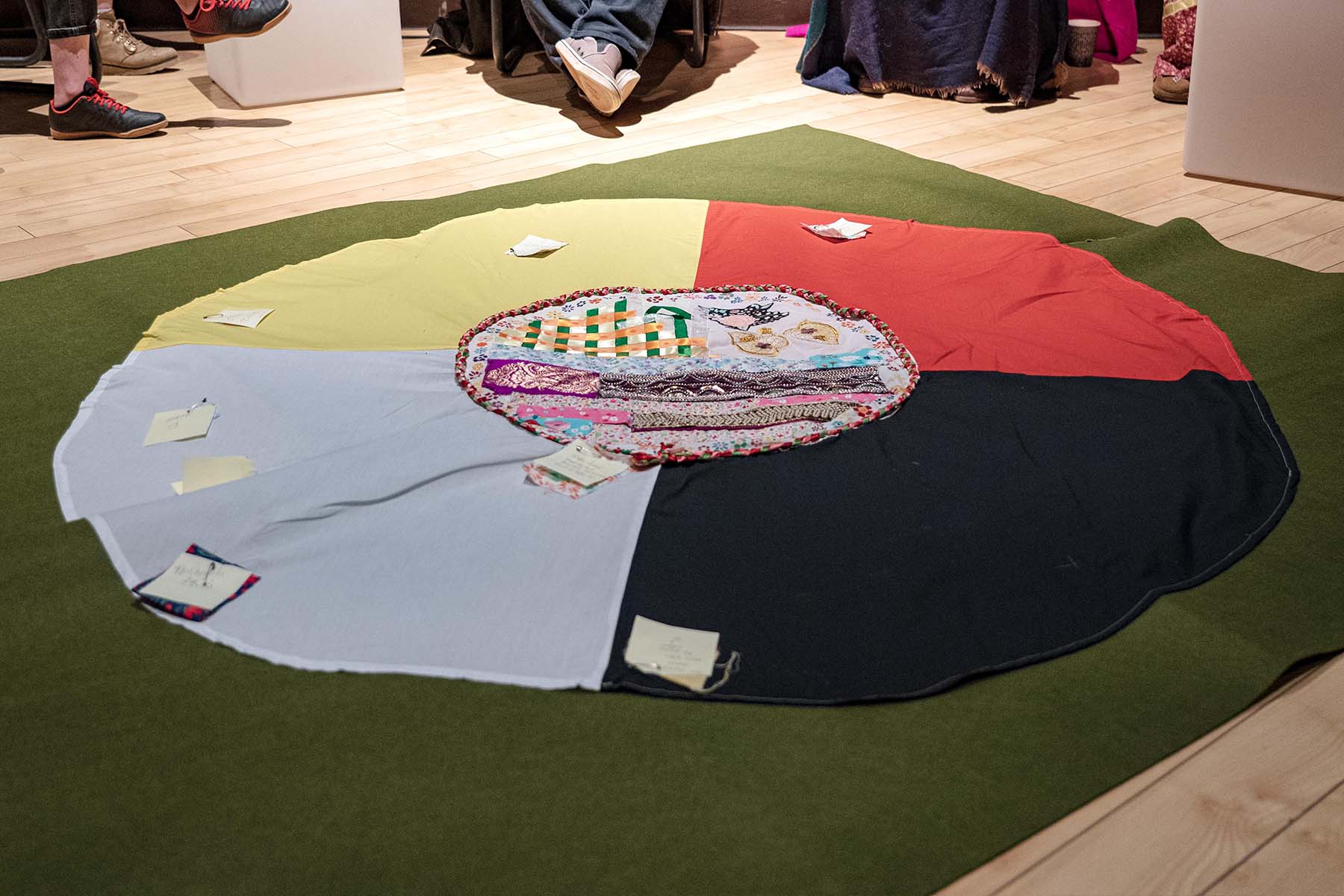
Menon and Simon's collaborative hand-stitched tapestry, presented at the WhereWeStand premieres.
The choice of locations - the Canadian Museum of Immigration at Pier 21 and the Woodland Cultural Centre - added depth to the events. The former is located on a national historic site where nearly one million immigrants landed in Canada from 1928 to 1971. The latter, situated beside the former Mohawk Institute Residential School, which officially closed in 1970, serves to preserve and strengthen Indigenous language, culture, art and history.
Ahead of each premiere, participants were taken on a tour of the host institution to learn more about the complex legacy of Canadian history, a story that cannot be told without including both newcomers and Indigenous voices. “When people come to Canada, there are all these treaties that they are picking up the responsibility of as well,” said Heather George, Executive Director of the Woodland Cultural Centre.
The events featured distinguished guests, enriching the premieres with their own arts, experiences and wisdom, including shalan joudry, poet, storyteller, singer, artist; Joe H. Henry, Metis singer; Catherine Anne Martin, Elder in Residence at Dalhousie, Director of Indigenous Community Engagement; Dr. Beverly Jacobs, Senior Advisor to the President on Indigenous Relations and Outreach, Office of the President, University of Windsor; Dr. Cathy Martin, Director at First Nations Education Administrators Association; Dr. Michael Doxtater, Associate Professor, The Creative School at Toronto Metropolitan University; and Grandmother Renee Thomas-Hill, Haudenosaunee Elder.
In the words of Marie Chapman, Chief Executive Officer of the Canadian Museum of Immigration at Pier 21, “This project showcases the magic that can happen when Indigenous people and newcomers are brought together to share ideas, experiences and skills in an environment emphasizing trust, respect and empathy.”
Anna Triandafyllidou, CERC Migration Chair and the project’s senior champion, echoed the sentiment, “WhereWeStand resulted in wonderful artistic work, but it also showed that strong bonds can be made when people of Indigenous and newcomer backgrounds have the opportunity to truly understand each other’s connection to the land that they both call home.”
See the project trailer here:
Follow these links to see news coverage of the premieres:
New Canadian Media (external link)
